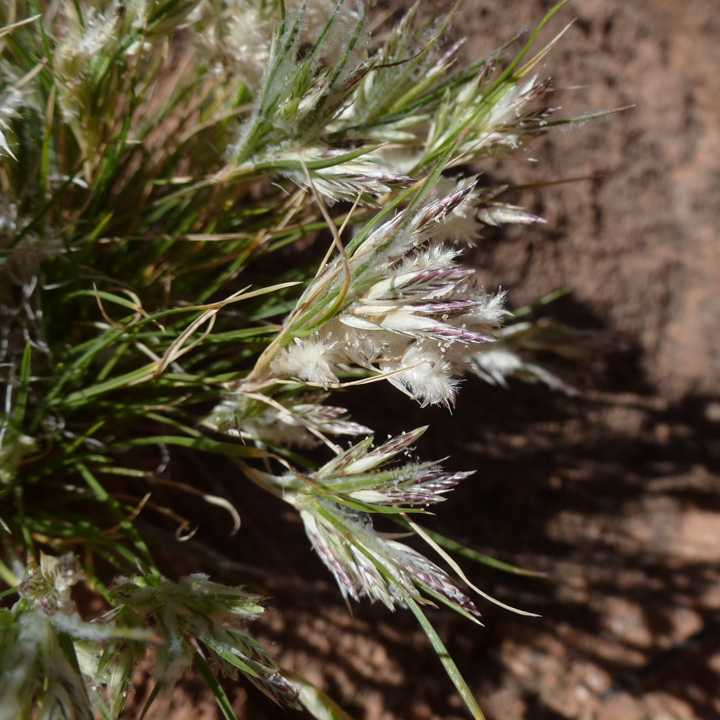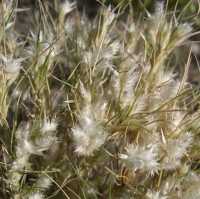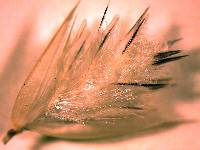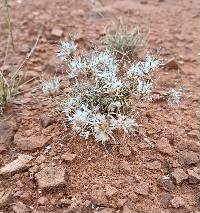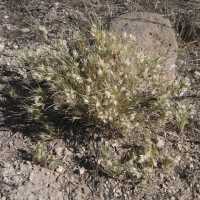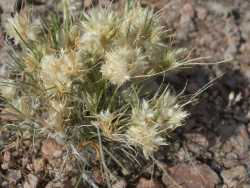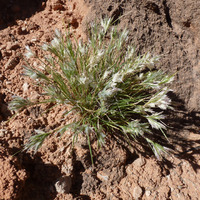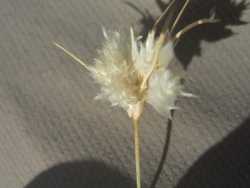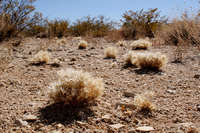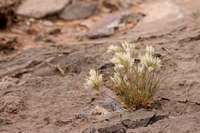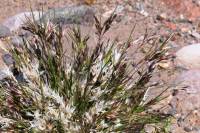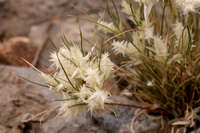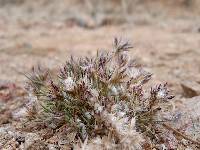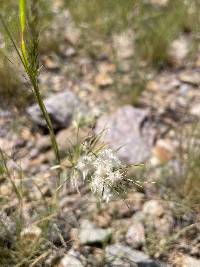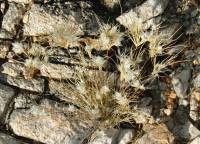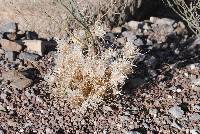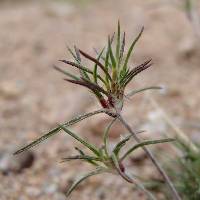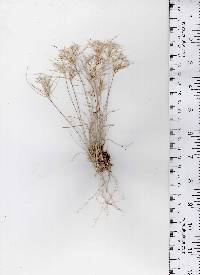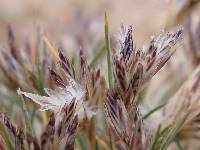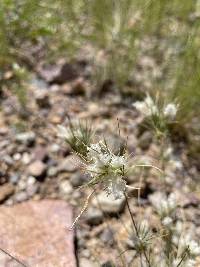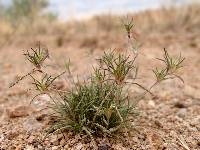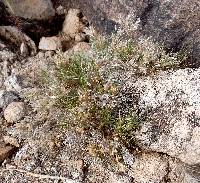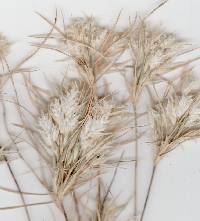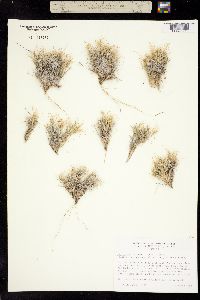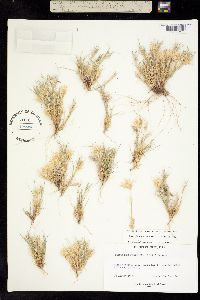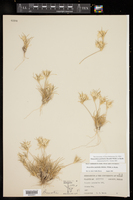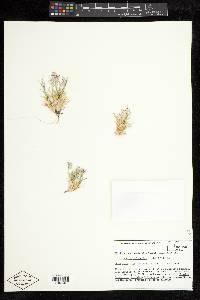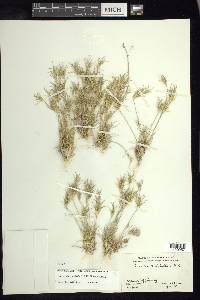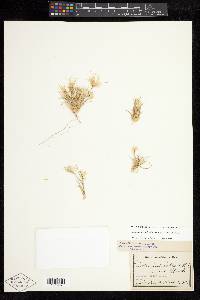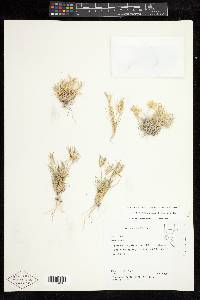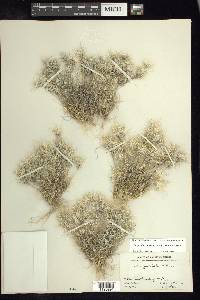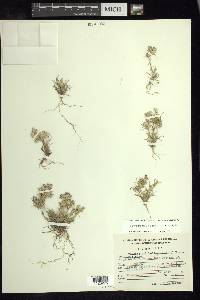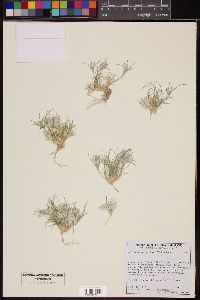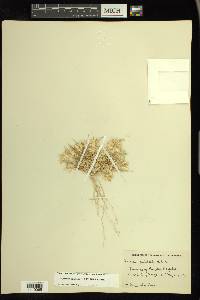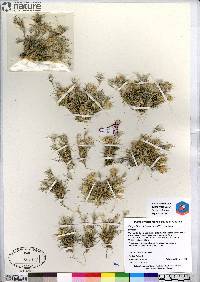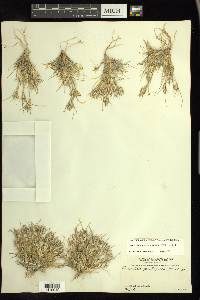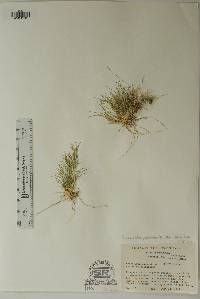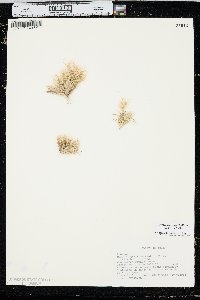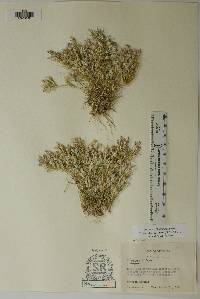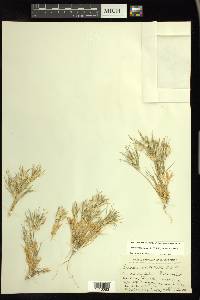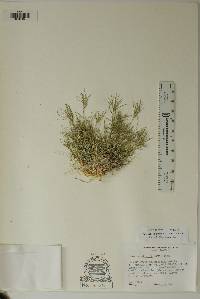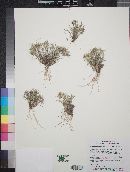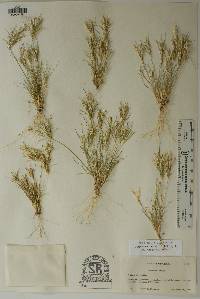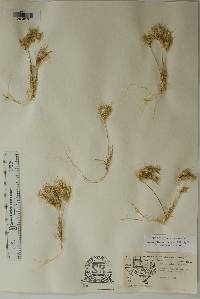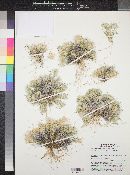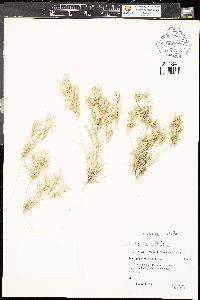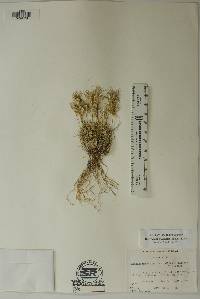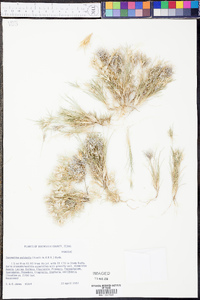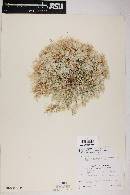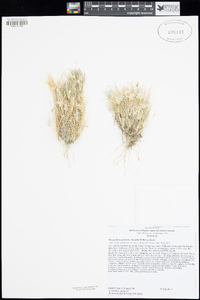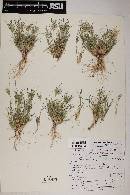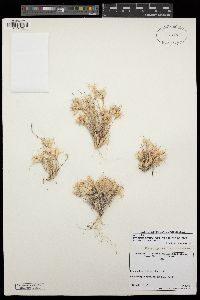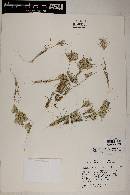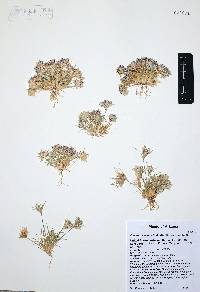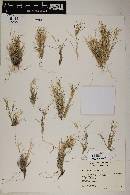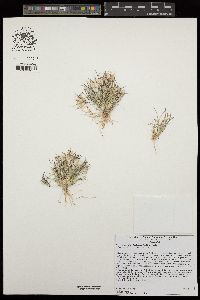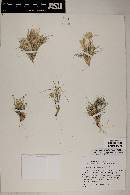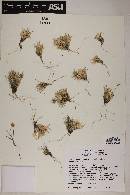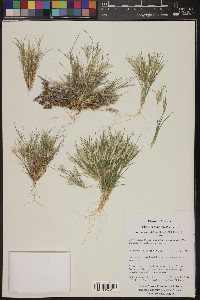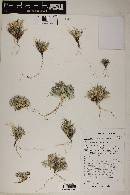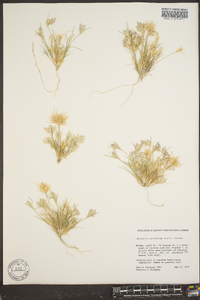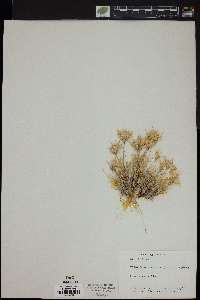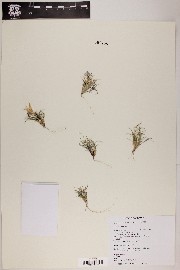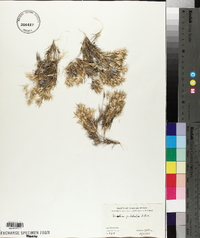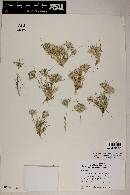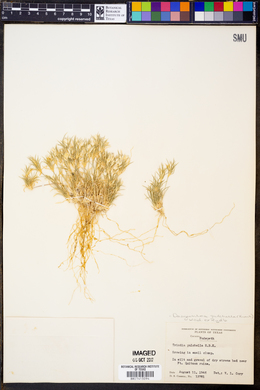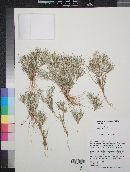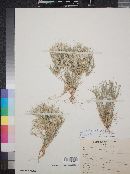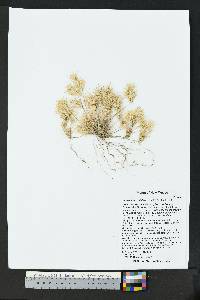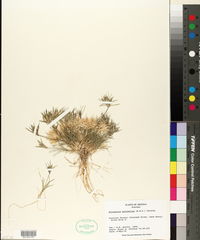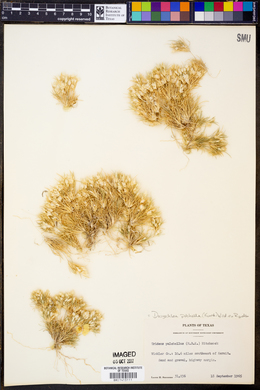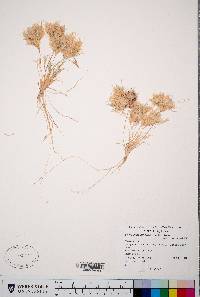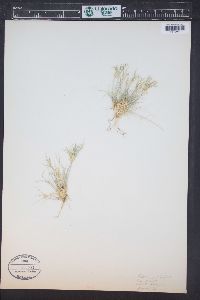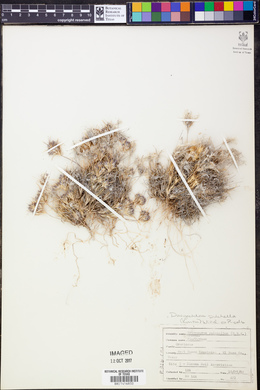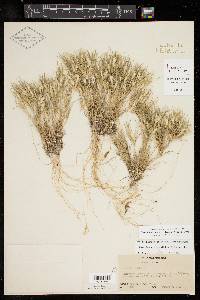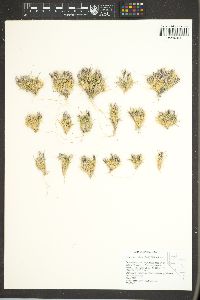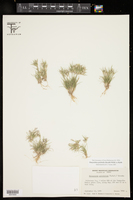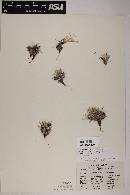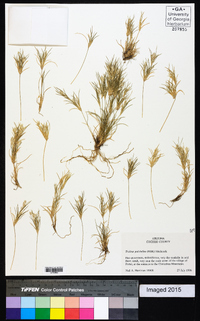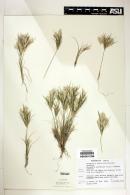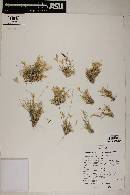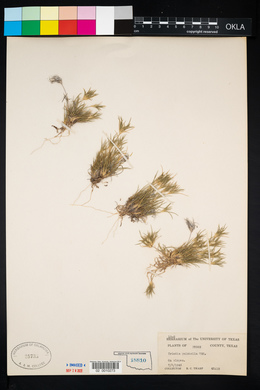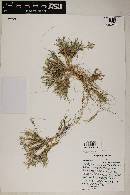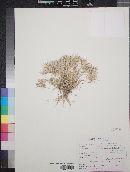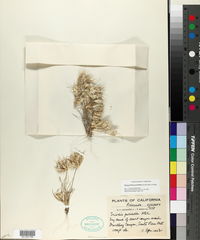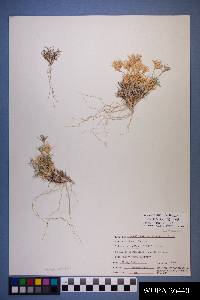
|
|
|
|
Family: Poaceae
False Fluff Grass, more...low woollygrass, fluff grass, fluffgrass (es: zacate borreguero)
[Erioneuron pulchellum (Kunth) Tateoka, moreKoeleria pulchella (Kunth) Spreng., Sieglingia pulchella (Kunth) Kuntze, Sieglingia pulchella var. parviflora Vasey ex Beal, Tricuspis pulchella (Kunth) Torr., Tridens pulchellus (Kunth) A.S. Hitchc., Triodia pulchella Kunth, Uralepis pulchella (Kunth) Kunth] |
Culms (1)4-15 cm, scabrous or puberulent; peduncles (internode below the panicles) 3-7(11) cm. Sheaths striate, margins scarious; ligules 3-5 mm; blades (1)2-6 cm, abaxial surfaces scabrous, adaxial surfaces scabridulous. Panicles 1-2.5 cm long, 1-1.5 cm wide, densely white-pubescent, light green or purple-tinged. Spikelets (5)6-9(10) mm, with (4)6-10 florets. Lower glumes 6-8.5 mm; upper glumes 6.5-9 mm, as long as or longer than the florets; lemmas 3-5.5 mm, lobes (1)3-3.2 mm, midveins extending into straight (1.5)2.5-4 mm awns; paleas 2-3.5 mm, keels long pilose proximally, ciliate distally; anthers 0.2-0.5 mm. Caryopses 1-1.5 mm, translucent. 2n = 16. Dasyochloa pulchella grows in rocky soils of arid regions.Its range extends from the western United States southward to central Mexico. It is the most common grass in the Larrea-Flourensia scrub of the southwestern United States and adjacent Mexico. Dr. David Bogler, USDA NRCS PLANTS Database Perennials, Terrestrial, not aquatic, Stolons or runners present, Stems trailing, spreading or prostrate, Stems nodes swollen or brittle, Stems erect or ascending, Stems geniculate, decumbent, or lax, sometimes rooting at nodes, Stems caespitose, tufted, or cluster ed, Stems terete, round in cross section, or polygonal, Stem internodes hollow, Stems with inflorescence less than 1 m tall, Basal leaves equal to or exceeding stems, culms, or scapes, Leaves mostly cauline, Leaves conspicuously 2-ranked, distichous, Leaves sheathing at base, Leaf sheath mostly open, or loose, Leaf sheath smooth, glabrous, Leaf sheath hairy at summit, throat, or collar, Leaf sheath and blade differentiated, Leaf sheath enlarged, inflated or distended, Leaf blades linear, Leaf blades subulate, needle-like, tip pungent, Leaf blades very narrow or filiform, less than 2 mm wide, Leaf blade margins folded, involute, or conduplicate, Leaf blades mostly glabrous, Ligule present, Ligule a fringe of hairs, Inflorescence terminal, Inflorescence lateral or axillary, Inflorescence a contracted panicle, narrowly paniculate, branches appressed or ascending, Inflorescence solitary, with 1 spike, fascicle, glomerule, head, or cluster per stem or culm, Inflorescence a pani cle with narrowly racemose or spicate branches, Inflorescence with 2-10 branches, Flowers bisexual, Spikelets sessile or subsessile, Spikelets laterally compressed, Inflorescence or spikelets partially hidden in leaf sheaths, subtended by spatheole, Spikelet less than 3 mm wide, Spikelets with 3-7 florets, Spikelets with 8-40 florets, Spikelets solitary at rachis nodes, Spikelets all alike and fertille, Spikelets bisexual, Spikelets disarticulating above the glumes, glumes persistent, Rachilla or pedicel glabrous, Glumes present, empty bracts, Glumes 2 clearly present, Glumes equal or subequal, Glumes equal to or longer than adjacent lemma, Glumes 1 nerved, Lemmas thin, chartaceous, hyaline, cartilaginous, or membranous, Lemma 3 nerved, Lemma body or surface hairy, Lemma apex dentate, 2-fid, Lemma mucronate, very shortly beaked or awned, less than 1-2 mm, Lemma distinctly awned, more than 2-3 mm, Lemma with 1 awn, Lemma awn less than 1 cm long, Lemma awn from sinus of bifid apex, Lemma awns straight or curved to base, Lemma margins thin, lying flat, Lemma straight, Lemma surface pilose, setose or bristly, Palea present, well developed, Palea membranous, hyaline, Palea about equal to lemma, Palea 2 nerved or 2 keeled, Stamens 3 FNA 2003, Gould 1988 Common Name: low woollygrass Duration: Perennial Nativity: Native Lifeform: Graminoid General: Dwarf, tufted perennial, can appear annual; numerous stems, 5-14 cm, wiry, mainly of single elongated internode bearing clustered fascicle of leaves and spikelets at apex; occasionally a fascicle bends over to the ground and takes root. Vegetative: Blades 1-5 cm long, 0.5 mm wide, involute, the margins firm and often white; ligule a low ciliate fringe less than 0.5 mm long; sheath open, striate, the margins ciliate; collar glabrous except for long marginal hairs. Inflorescence: Compact and dense, capitate clusters of sessile or short-pediceled spikelets, exceeded in length by subtending leaf blades; spikelets 7-13 mm long, 6-12 flowered, glumes subequal, acuminate, scarious, with a green midvein, as long as the spikelet but spreading; glumes and lemmas papery, sometimes purple-tinged; lemmas 3-5 mm, densely pilose with long hairs on each of the 3 green veins, tip deeply 2-lobed with stout awn 1-2 mm long between lobes. Ecology: Dry, rocky slopes and flats below 6,000 ft (1829 m); flowers summer and fall. Distribution: c to s CA, east to c CO, south through most of AZ, NM, w TX; south to c MEX. Notes: Dasyochloa is a monotypic genus (one species) endemic to North America. It is especially common and can be a dominant in southwest deserts. It is a fairly distinct dwarf bunchgrass to 15 cm tall, often with long, stiff, sometimes arching runners producing new plants, sometimes in mid air; the densely packed panicles are subtended by leafy bracts and spikelets are dense with hairs which can appear to be bursting from inflorescences. The tufts of hairs can give the tops of plants a white, snowy appearance, especially late in the season. Early season new leaves are often covered with white cobwebby fluff which easily falls off. One of the most hardy of the small perennial grasses, it responds to very little rainfall and is often found on overgrazed or denuded soils. Munroa squarrosa has a similar dwarf tufted growth form with elevated clusters of leaves and spikelets; however, M. squarrosa lacks the wooly tufts of hairs in the spikelets, and it is annual while D. pulchella is perennial. Ethnobotany: Havasupai used a decoction of the leaves as a laxative. Etymology: Dasyochloa is from the Greek dasys, shaggy, and chloa, grass, referring to the wooly spikelets; pulchella is derived from the Latin for beautiful. Synonyms: Erioneuron puchellum, Tridens pulchellus, Triodia pulchella Editor: SBuckley 2010, FSCoburn 2014, AHazelton 2015 |
|
|
|

